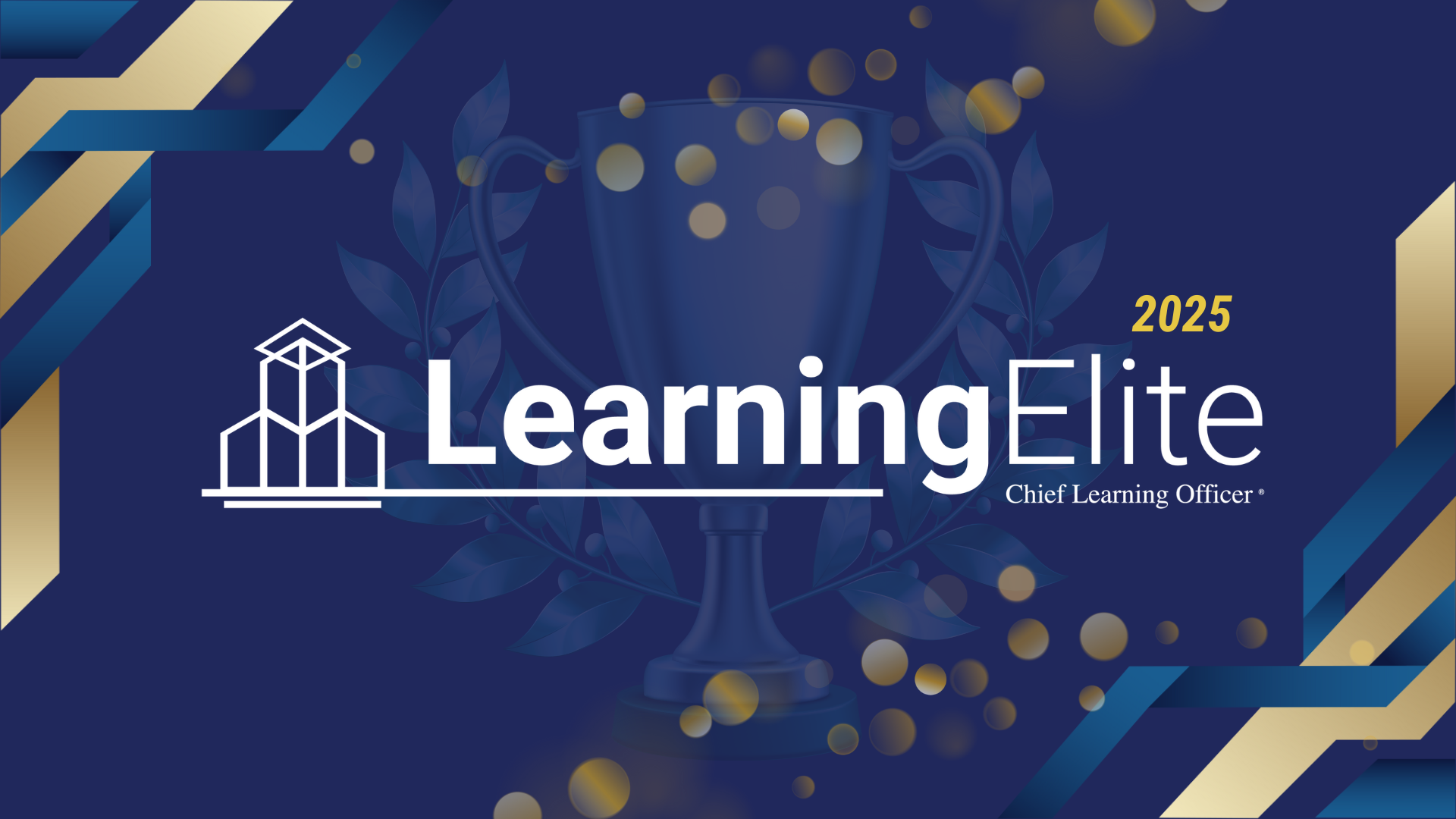 “Global economy” is in the vernacular of nearly every large organization. Information flows freely around the world via the Internet. Products and services are sourced and distributed across country boundaries. Once an aspiration for large corporations, doing business on a global scale is now a reality in organizations of all sizes as business expansion and partnerships flourish across continents, cultures and languages.
“Global economy” is in the vernacular of nearly every large organization. Information flows freely around the world via the Internet. Products and services are sourced and distributed across country boundaries. Once an aspiration for large corporations, doing business on a global scale is now a reality in organizations of all sizes as business expansion and partnerships flourish across continents, cultures and languages.
As organizations struggle to direct the flow of knowledge to benefit performance, the internationalization of learning must be reckoned with. Just about every organization relies in some way on relationships in other countries to import or export goods, services, information or human capital. What challenges and practices shape this international learning agenda? What similarities and differences surface across corporate learning audiences? In this article, global learning leaders chime in with their views on the global learning landscape.
The knowledge and skills necessary to get the job done in this global economy encompass an international platform that has to weigh many considerations. Primary lessons that emerge from a scan of the international learning landscape include the need for keen awareness of global issues and a learning strategy that reflects the needs of business units and the individual learners. Global learning centers and centrally managed knowledge are becoming common. Savvy learning leaders need to answer several key questions in order to navigate the course of international learning:
- How should the learning agenda differ by region?
- What impact do geography, culture and language have on learning style?
- Can learner characteristics be shaped, regardless of national or cultural origin?
- How does infrastructure affect the learning strategy, and how easily can it be adapted for corporate goals?
- What do experts who have shaped successful international learning agendas recommend for strategy?
Planning for Learning Around the World
Components of any good learning strategy take on new dimensions when going global. Learning leaders across organizations have had experiences that point to the importance of developing a diverse agenda to reflect learning needs. The development of a learning portfolio that establishes goals and standards on a global level but captures business and regional needs emerges as key to achieving learning success.
Learning leaders from around the world, regardless of their corporate headquarters, agree that the learning strategy benefits greatly from differentiated approaches based on region and goals. Figure 1 shows issues that commonly surface when learners reside in different countries and cultures.
The experiences of global leaders around the world point to a few rules that consistently generate success. While these characteristics also may be reflected in effective domestic learning strategies, the global implications are generally broader and more complex:
- Prevailing Business Needs: Understand the local, regional, national and global business environment, including goals, practices and employee demographics.
- Three-Tiered Strategy: Build the learning strategy with the needs of the global enterprise, geography and the individual learner.
- Needs of the Individual Learner: Since learning success comes down to the individual learner, address the culture and style issues.
- Multi-Level Review: Ensuring that the learning plan can be executed successfully in each setting requires a distributed review process.
- Dynamic Learning Process: Build a learning organization “rapid response” system that enables continual updates to the learning content and system, and flexibility to meet different needs around the world.
Prevailing Business Needs
The primary compass for navigating learning needs originates with the business units that will benefit from the learning strategy. CLOs acknowledge the importance of business partnerships in domestic strategies, but find the importance of that relationship magnified on a global level. Particular sensitivity to the varying needs of the employees and business units, including goals, operating protocols, culture, history and timelines, is critical in the international learning arena.
At a very early stage, CLOs acknowledge that learning leaders must know where the business is headed and what competencies are needed. While learning needs may be similar for certain skills required (e.g., to operate production systems around the world), skill requirements may differ greatly for functions like sales and marketing, where the learning solutions fit a more regional requirement. An effective learning strategy starts with the desired business outcomes for the corporation and maps the behaviors, skills and competencies required from employees to achieve those goals. The most diverse corporate education and training scheme is best derived from overarching corporate goals.
Three-Tiered Strategy
Learning initiatives around the world often require a delicate balancing effort. The CLO captures the need for learning that supports the enterprise business requirements and, at the same time, the regional terrain and individual learner. For example, Mikko K. Salminen has explored the international learning landscape while directing the Nokia Learning Center Network with activity in China, Asia-Pacific, Latin America and North America. Nokia is the world leader in mobile communications with products like mobile phones and solutions for imaging, games, media, mobile network operators and businesses. The content and delivery of global courses present an opportunity to reinforce corporate values in a manner that balances three important elements: culture of the learners (where they originate), the Nokia corporate culture and the learner’s personal style.
The three-tiered approach can address learning operations at three levels:
- Enterprise Level: Enterprise-wide learning strategy; coordination of learning effort; a common learning management system and global portal; learning initiatives that drive worldwide values and standards; and unifying communications around the corporate vision.
- Regional Level: Deployment; access to learning to ensure all employees have the opportunity to learn regardless of location; the technology delivery infrastructure based on regional capacity; the cultural and political implications for business requirements and employment; and the coordination of delivery.
- Local Level: Delivery; participant and event tracking; trainers; learner performance; local learner culture and individual learning style issues; materials; schedules and contingencies.
Often, CLOs develop a “marbleized” approach to learning strategy in order to accommodate both the unique and specialized requirements of the region and locale and integrate learning activities into a larger, blended plan that includes common enterprise-wide learning goals.
The Individual Learner
The true measure of a successful learning strategy rests in the ability to advance the skills and change the behavior of the individual employee. Testimony from learning leaders consistently underscores the importance of understanding each learner cohort across countries and cultures if the learning goals are to be achieved. A learning leader from Inco Limited, an internationally diverse organization, recently elaborated on the importance of individual learners around the globe. Inco Limited, one of the world’s premier mining and metals companies, produces nickel, copper, cobalt, precious and platinum-group metals and specialty nickel-based products. Headquartered in Toronto, Canada, Inco has production and marketing operations in more than 40 countries.
When asked about the differences she sees among corporate learners around the world, Linda Padfield, director of Organizational Development at Inco Limited, concludes there are few differences in the skills required. The greater challenge is in the learning environment that enables the learning to take place. “Learners in some Asian cultures are less likely to challenge a trainer and more likely to accept whatever is said in the classroom as correct,” she said. You cannot rely on the ability of learners to understand the learning content intellectually, she suggested. The information has to be staged in a way that the culture of the learners is considered. Of course, the learning behaviors, like the deference to “authority” in Asian countries, “are a mirror of what occurs in the workplace, so it is important to teach our leaders to create an environment that rewards input and involvement.”
Corporate learning experts have long recognized that learning motivation differs across cultures. Asians and Americans are career-driven and eager to learn skills that develop career potential. In other cultures, career development and the need to acquire new skills in anticipation of future career moves are foreign concepts. Around the world, the ultimate goal is to motivate employees to participate in learning programs. In the case of Inco, its strategy is developed locally to concentrate on the needs of the business and individual learner in each region where it operates.
Successful transmission of ideas, technical terms and content to learners in many nations is in great demand. One CLO admits his organization has learned from its worldwide participants by paying attention to their learning needs. Trainers are coached to keep training content language free of confusing analogies, but learners are provided “ESL” signs they can raise to remind the presenter to slow down, speak clearly and repeat the message in a way that will be clearly understood. This classroom courtesy dramatically increases effectiveness of learning across the continents. Global learning demands a respect for the cultural nuances of learners that requires constant vigilance in each class in every location.
Multi-Level Review Plan
Given the multitude of business issues and learning needs that comprise a global learning solution, the most important navigation tool for CLOs may very well be the planning and review process. International learning raises a range of interrelated issues that require a strong awareness of geography and culture.
A governance system that captures the needs and issues of learners globally can contribute to global success. Creating a process that causes the adoption of learning is good practice for any global learning plan. One global enterprise uses local employees to uncover hot issues and cultural sensitivities in the home country and to identify legal requirements, technology infrastructure and operating practices that could have a significant impact on learning delivery. Conversion of the content and delivery to the local environment is a key step for learning that travels the world over. The intent is to reflect global issues as early as the design stage rather than retract unsuccessful learning. The extra time up front to involve regional resources and plan for local delivery increases effectiveness overall.
For example, Nokia carefully manages the interface between local ideas from learning delivery sites and the Global Solution Development Team in order to blend the content and delivery of solutions around the world. At Inco, all leaders of organizational development around the world “meet” by phone every month to review what they are doing. This often leads to sharing the development work that meets common needs.
Dynamic Learning Process
CLOs with global strategies function in a fast-paced environment. Fast cycle times are critical for learning solutions to fulfill business needs in a short time frame. To be agile, the learning needs of business units must be quickly satisfied. At Nokia, Salminen advises CLOs to “be there when businesses are calling you. Be willing to take bigger challenges and smaller projects. Establish the reputation that the learning organization can be helpful to the business, even if it causes the learning organization to be stretched.”
CLOs must manage international learning as an active portfolio. Constant revision of learning solutions to reflect current business circumstances, adaptation to the three delivery tiers and integration of efforts for cost-effectiveness can keep learning from becoming obsolete or irrelevant.
International CLOs Ponder International Learning Issues
Following a gathering of 27 international corporate learning officers in Germany, Concours Group European Managing Director Peter Scott-Morgan gathered these observations:
The strongest similarity across learning leaders worldwide (especially in the United States and Europe) is the desire to take a strategic view of learning and recognize that corporate learning and corporate change are now largely indistinguishable. However, Europe tends to have less tolerance for the “fad” approach, meaning businesses will only tolerate or encourage learning when there is a clear line of sight to strategy. In contrast, more North American learning leaders embrace the value of learning generally as critical to career and business growth, development and innovation.
In addition to the components of any corporate learning strategy, global learning strategy demands that corporate leaders make a strategic decision of whether to go for a “one size fits all” approach or to advance skills and change behaviors by adopting different learning approaches around the globe that reflect local and national cultures. Learning leaders need to answer: Why is a global learning strategy crucial for the learning agenda? Given the complex nature of the problem, the answers to this question may vary from country to country. Learning leaders need to decide how best to position corporate learning. Is it better to dictate learning to ensure corporate learning outcomes are achieved, or is it better to collaboratively co-create learning to succeed?
Experienced corporate learning leaders understand that the terrain is necessarily varied. Deliberate and careful plotting of learning that constantly examines coordinates based on goals, learners, culture, language, geography, politics and standards is what produces learning strategies that successfully navigate the vast international learning landscape.

Maryann G. Billington, engagement director for The Concours Group (www.concoursgroup.com), specializes in learning and performance strategy. Throughout her career as an independent consultant, executive coach, corporate training manager and college dean, Maryann has embarked on many successful global learning journeys. She is also the founder of Spectra Performance Services and can be reached at mbillington@clomedia.com.
















